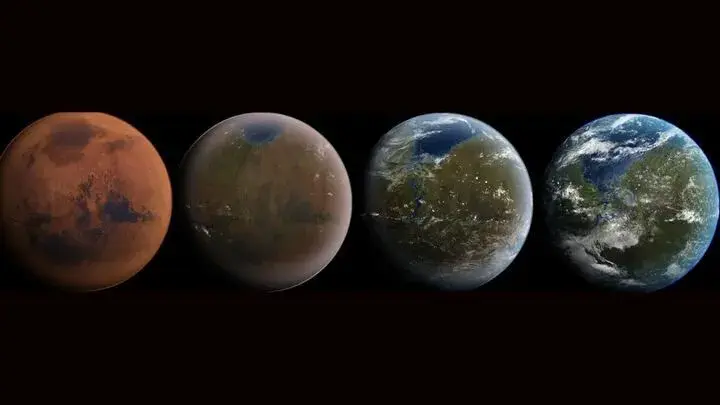There’s geological, and then there’s ecological. Mars has geology but has no ecosystem discovered thus far.
So the question, “should we replace one ecosystem with another on Mars for our own benefit?” doesn’t really make much sense. There isn’t anything to replace, as far as we can tell right now.
Perhaps consider instead that creating an ecosystem where there wasn’t one before is of an overall net benefit to life in the universe, of which all current evidence points to being present on only one planet.
If you read the article, they’re raising the concern that we might have the technology to destroy a potential Martian ecosystem before we have the technology to detect it. The question isn’t what we currently are aware of, it’s whether we might be losing a one-of-a-kind resource that we’re completely unaware of.
If there’s life on Mars of any kind, that’s extremely profound. It would give us a chance to study life on another planet and compare it to our own. It may be that there’s no ecosystem on Mars, but it’s probably worth it to make absolutely sure that that’s the case before we go destroying what might be there.
It may be that we won’t have the opportunity to screw Mars up for decades, or centuries. But it’d probably be a good thing if we’d give it some serious thought as a species first.
So, i read the “Red Mars” trilogy. I also keep up with research into the Martian atmosphere, its soil and geology.
My take is that all of this is still a pipe dream as much as it was 30 years ago when we did not know many of these things.
People don’t want to see just how hostile Mars is to life. They pick a couple of the most obvious problems (e.g. radiation, no liquid water, no oxygen) and then they look for the first solution that seems viable and then declare Mars somehow liveable because look we can just implement those things.But they are completely ignoring that: none of these proposed solutions have been implemented at scale yet, at least not outside of earth’ atmosphere, there are hundreds of other known problems that often just don’t make it to the head lines because they don’t look that interesting or threatening (example: dust is suuuuper deadly on Mars, probably even worse than moon dust) and many problems will undoubtedly only become obvious once living beings are on the surface of Mars.
I am glad that there is hard sci-fi dealing with some of these problems in very optimistic ways, because we should try to better our understanding of them and not just give up, but we also should not have any illusions about how hard this task is and that this can take centuries of work.
Yeah, skimmed the article ans they dont seem to mention tge problem of having no oxygen (which might be a problem for the moss?), Mars not having enough gravity to hold an atmosphere (or is that bs?) and also the timescale (I think terraforming takes at least tens of thousands of years?).
If I remember correctly, it’s not a lack of gravity, it’s a lack of a magnetic field, so solar winds strip away the atmosphere.
Yes, that sounds familiar!
Zach Weinersmith (of SMBC) recently wrote a great non-fiction book with his wife about how difficult and inadvisable actually settling Mars would be called A City on Mars. Great reading if you’re interested in non-fiction humor about the subject.
Can we completely destroy one planet before we take on another?
🤖 I’m a bot that provides automatic summaries for articles:
Click here to see the summary
“However, plants such as mosses offer key benefits for terraforming, including stress tolerance, a high capacity for photoautotrophic growth, and the potential to produce substantial amounts of biomass under challenging conditions,” the new study’s team wrote in the paper.
The scientists subjected whole S. caninervis plants to conditions typically found on Mars: high doses of gamma radiation, low oxygen, extreme cold and drought.
“For example, S. caninervis plants maintain high levels of sucrose and maltose following stress; these sugars serve as osmotic agents and protectants that help preserve and stabilize cellular architecture,” wrote the scientists.
Stress also triggers genes that encode for photoprotective proteins and enzymes that help scavenge harmful reactive oxygen species generated under radiation.
Whether this statement is an exaggeration will depend on future experimentation — and may not even be achievable within our lifetime — but one important element missing from the discussion is not the feasibility of the science but the ethics behind it.
And, while the concept has been romanticized and thrown around in the media of late, there are serious concerns around social consequences on an extraterrestrial scale as a result of completely transforming an entire planet for human occupation.
Saved 72% of original text.





